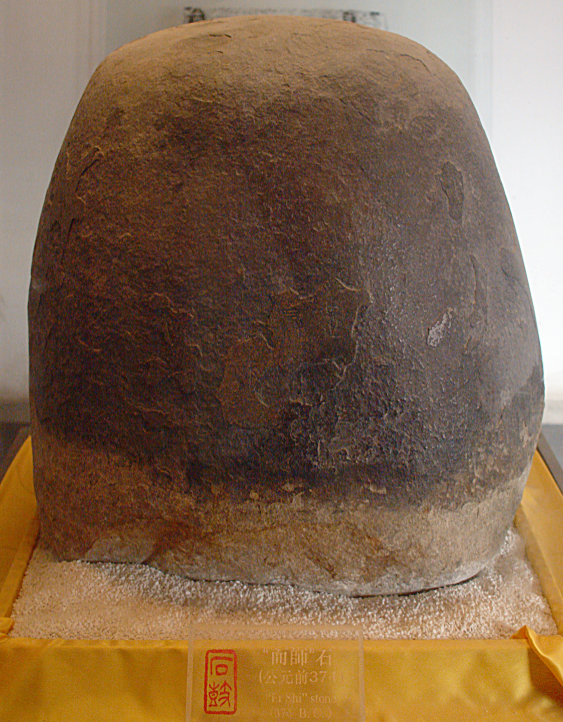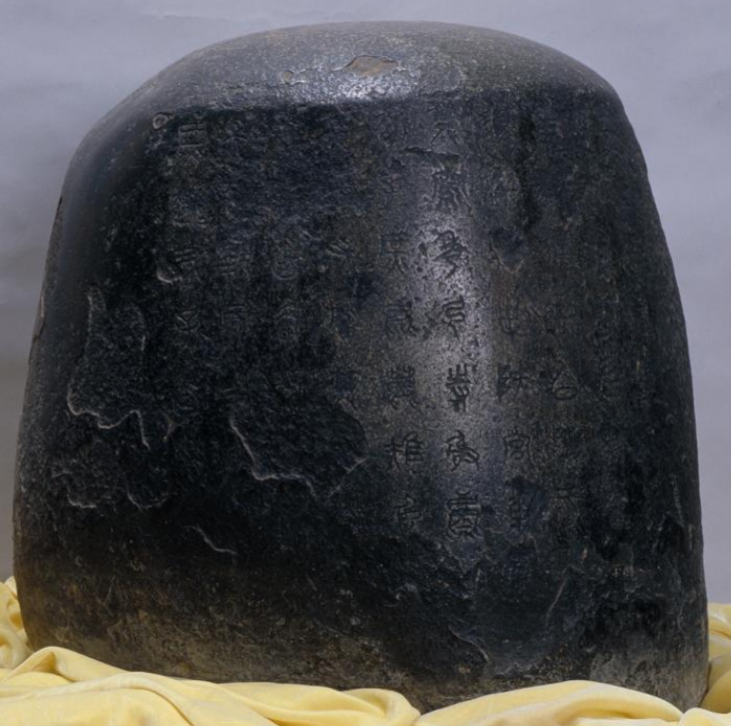

 |
![]()
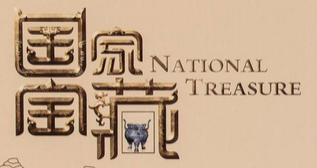
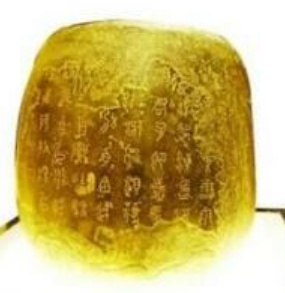
石鼓
故宫博物院(北京)
Stone Drum
at Beijing's Palace Museum
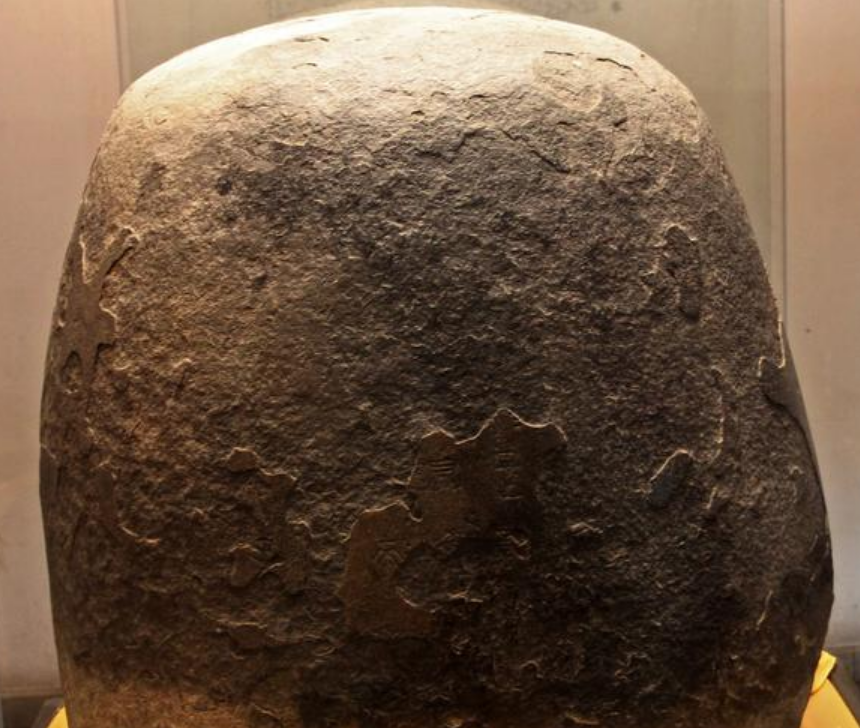
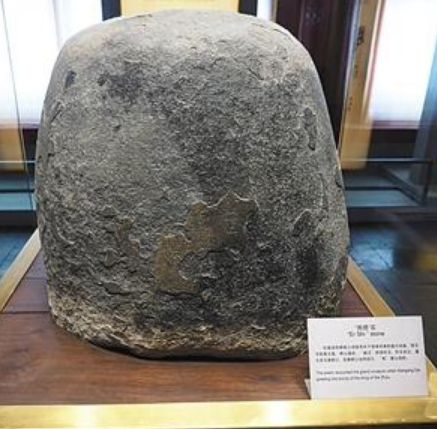
石鼓也叫“陈仓石碣”、“岐阳石鼓”,是十座刻有文字的石墩,刻于先秦时期,627年发现于今陕西省宝鸡市的荒野,现保存在北京故宫博物院石鼓馆(位于珍宝馆内)。由于鼓身上刻凿的文字珍贵,是中国现存最早的石刻文字,历代都极受重视。根据鼓身上的文字分别命名为:乍原、而师、马荐、吾水、吴人、吾车、□沔、田车、銮车、□雨。
The Stone Drums of Qin or Qin Shi Gu (Chinese: 秦石鼓; Wade━Giles: Ch'in Shih Ku) are ten granite boulders bearing the oldest known "stone" inscriptions in ancient Chinese (much older inscriptions on pottery, bronzes and the oracle bones exist). Because these inscribed stones are shaped roughly like drums, they have been known as the Stone Drums of Qin since at least the 7th century.
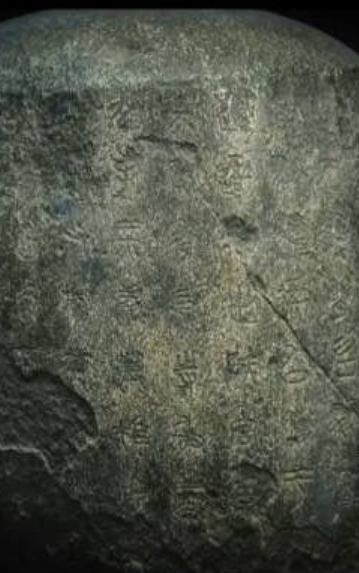
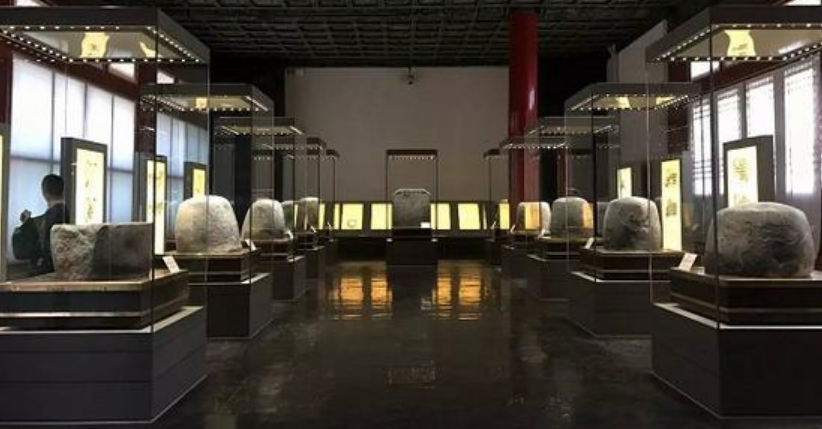
石鼓的刻凿年代一直没有定论,现在比较认可得说法是前故宫博物院院长马衡在《石鼓文秦刻石考》中认定石鼓刻于先秦时期,但具体年代说法不一。十座石鼓上都刻有文字,数字不等,共700多个,现在仅存不到500个,每个字有两寸见方,当时的金石学家没有见过这种字体,后来认定这个是介于甲骨文和小篆之间的大篆,被称为石鼓文。

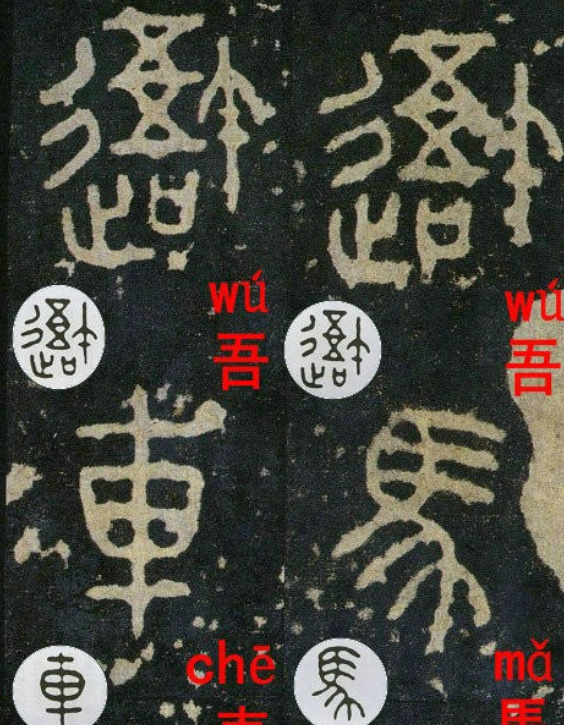
Like their discovery, the details of their origin have also long been subject to debate. While most now agree that they were made at the behest of a Duke of the feudal state of Qin (秦 Ch'in), the century of their creation is still uncertain; It is very likely that these artifacts date to the late Spring and Autumn period(576 to 537 BCE).
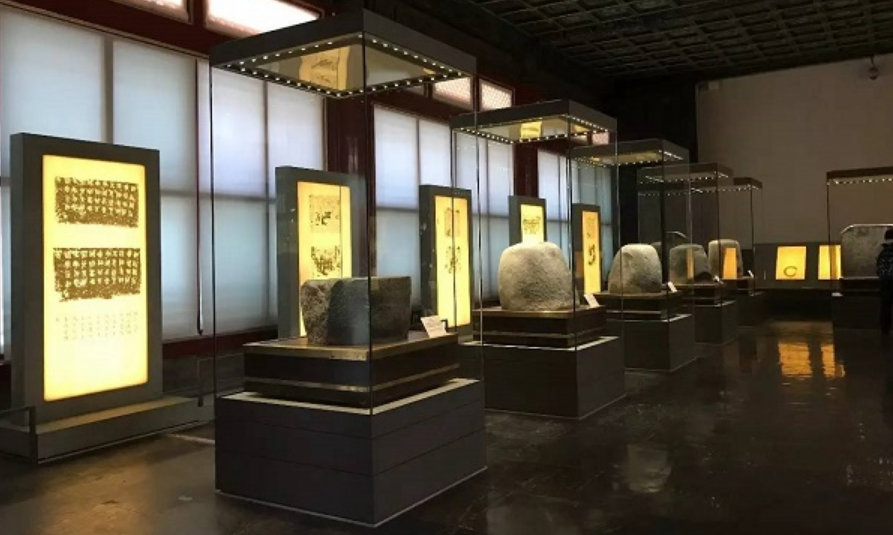
The ancient inscriptions on them are arranged in accordance with each stone's size and proportions, the largest stone bearing fifteen lines of five characters each, and a smaller one with nine lines of eight graphs each, neatly arranged as if in a grid. The contents are generally four-character rhymed verse in the style of the poems of the Shijing (诗经), the Book of Poetry, a few lines of which they even paraphrase. The contents generally commemorate royal hunting and fishing activities.
Originally thought to bear about 700 characters in all, the Stone Drums were already damaged by the time they are mentioned in the Tang Dynasty (618-907 CE) poetry of Du Fu. The drums had only 501 graphs by the Song Dynasty (960-1279 CE), when the best rubbings now surviving were made (Mattos, p. 57. Cf. Guo Zhongshu). They have been further damaged through rough handling and repeated rubbings in the years since, and one was even converted into a mortar, destroying a third of it. A mere 272 characters are visible on the stones today. In the best rubbing, only 470 of the 501 characters are legible, or about 68%; after omitting repeated graphs, this leaves us with a treasury of 265 different graphs, 49 of which are known from no other source (excluding recognizable variants). Even among recognizable graphs, scores of them are used in ways unattested elsewhere, leading to great difficulty and disagreement in their interpretation, a situation common to Zhou dynasty inscriptions.
